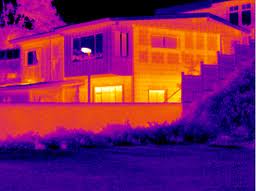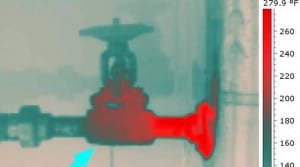Would your customers like to save money on energy and on your own company’s labor charges? Would you like to increase technician productivity, reduce the amount of callbacks and offer your customers something more than your competition is offering? If you answered “yes” to any of the above, you need to look into Infrared imaging.
 Yes, I know, infrared has been around for a long time. And a few hardy souls tried implementing it back when the technology first made the leap from military to civilian life — and most gave up on it. Why?
Yes, I know, infrared has been around for a long time. And a few hardy souls tried implementing it back when the technology first made the leap from military to civilian life — and most gave up on it. Why?
The answer was simple: the technology was brutally expensive, and there was no training available to those who invested in it. Sure, they could point their $8,000 infrared camera at a house and see heat escaping through some old single pane windows, but did they really need a camera that cost as much as a new car to know old windows lost heat? Not really.
Well, I have news for you, nothing much has changed since those days except for two little things: the cost of the device and training on how to use it.
You can now pick up a thermal imaging camera for under $2,000. Even better, now there’s training available to teach you how to use the device to diagnose everything from an overcharged air conditioning system, to a leaking steam trap, to a horse with a sore knee. (Yes, you can still use it to look at heat escaping through an old window)
How can people in the building trades use it? Take a look:
- Roofers use it to find water leaks when it’s not raining.
- Plumbers and pipe fitters can use it to locate buried piping without digging.
- Boiler technicians can use it to check steam traps from 100 feet away.
- Electricians can use it to check distribution panels from a safe distance.
- Insulation companies can use it to check for voids in insulation without opening up the walls.
- Refrigeration technicians can use it to find non condensables in a condenser without removing the refrigerant charge.
Here’s an example: the valve in the picture is open, yet there was no steam supply to the system. No one thought that the valve was suspect, as there was no question as to it’s being open.
John Cannamela of Infrared Survey took infrared images of the system components and found the valve was actually blocked. The few minutes he spent with infrared saved countless hours of disassembling piping looking of the problem, not to mention the system downtime he saved.
You name it, there’s probably a use for infrared, and you can save time and money using it.


People have been burned by infrared tech before, even if it is cheaper than before, it may take a while for us to come back around a second time.
http://www.foxcharlotte.com/news/top-stories/Infrared-Survey-131326419.html